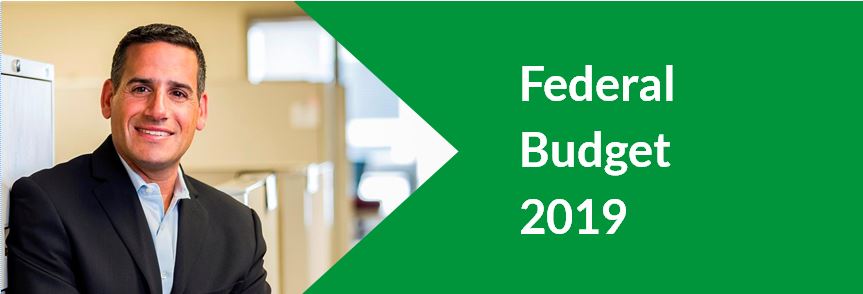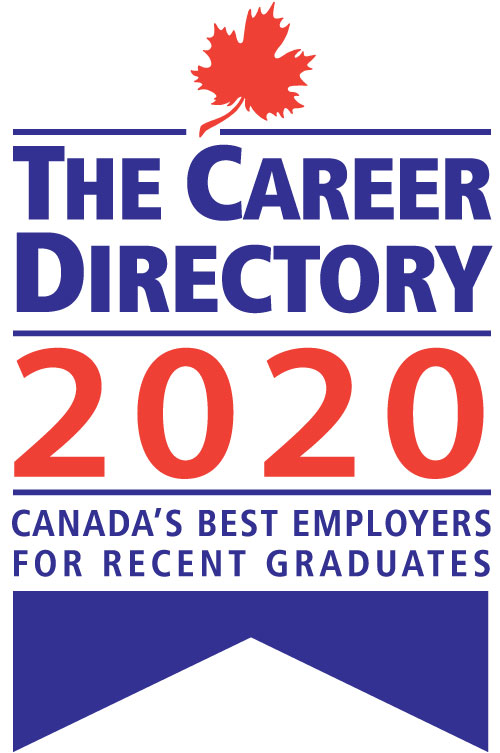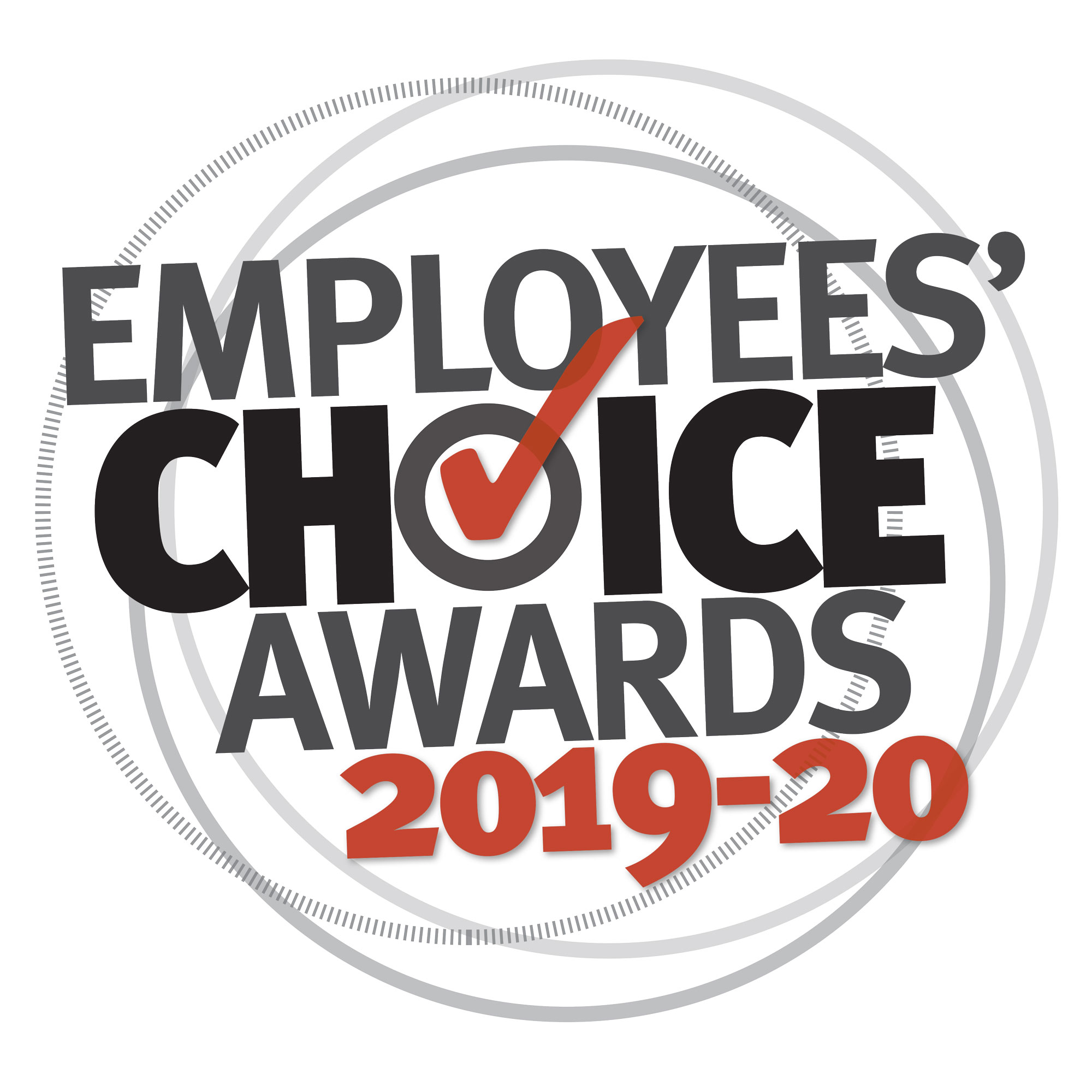Budget Highlights
- Complete and immediate write-off for certain zero-emission vehicles – mostly electric cars.
- Additional funding for the Canada Revenue Agency (CRA) to improve the speed of T1 Adjustment processing
- Introduction of a $200,000 annual cap on employee stock option grants by large, long-established, mature firms (terms not defined). Start-up corporations and stock options already granted would not be affected by this annual cap.
- An increase of the RRSP Home Buyer Plan withdrawal limit from $25,000 to $35,000 per person.
- Relationship breakdown: couples who buy homes as individuals post-divorce will be considered first time home buyers, even if they had owned a home together.
- A reduction of the borrowing cost for eligible first-time home buyers by providing up to 10% funding through the Canada Mortgage and Housing Corporation (CMHC) without ongoing monthly payments; CMHC’s share would be paid back when the home is sold.
- Additional funding for the CRA for audits of the real estate sector, such as house flipping transactions and proper reporting of the sale of principal residences.
- Rebate of $5,000 on certain zero-emission passenger vehicles – mostly electric cars.
- Annual tax credit up to $250 for skills training, up to a maximum of $5,000.
- Mention of much-needed tax law reform. (See related article.)
- Changes to the imbalance of inter-generational business transactions. Currently, it is more expensive to pass a business on to a family member than to a non-family member.
- Changes to passive investments – i.e. investments within a corporation that are typically unrelated to the core business. An example would be income from a rental property. The government severely restricted tax breaks on passive income in the 2018 budget, angering many small business owners who might have been hoping for an easing in this budget.
If you have any questions about the 2019 Federal Budget, please contact your accountant.
A. Personal Income Tax
Home Buyers’ Plan (HBP)
The HBP allows first-time home buyers to withdraw RRSP funds without tax to purchase or build a home, repaying the funds over a 15-year period.
Budget 2019 proposes to increase the HBP withdrawal limit to $35,000 from $25,000. As a result, a couple will potentially be able to withdraw $70,000 from their RRSPs to purchase a first home. This increase in the HBP withdrawal limit will apply to the 2019 and subsequent calendar years in respect of withdrawals made after Budget Day.
Budget 2019 also proposes, generally, that an individual will be considered to meet the first-time homebuyer requirement, provided that the individual lives separate and apart from their spouse or common-law partner for a period of at least 90 days as a result of a breakdown in their marriage or common-law partnership. However, in the case where an individual’s principal place of residence is a home owned and occupied by a new spouse or common-law partner, the individual will not be able to make an HBP withdrawal under these rules.
Change in Use Rules for Multi-Unit Residential Properties
A taxpayer is deemed to have disposed of, and reacquired, a property when the taxpayer converts the property from an income-producing use (e.g., a rental property) to a personal use (e.g., a residential property) or vice versa. Where the use of an entire property is changed to an income-producing use, or an income-producing property becomes a principal residence, the taxpayer may elect that this deemed disposition not apply. As a consequence, the election can provide a deferral of the realization of any accrued capital gain on the property until it is realized on a future disposition.
The deemed disposition also occurs when the use of part of a property is changed. For example, this can occur where a taxpayer owns a multi-unit residential property, such as a duplex, and either starts renting or moves into one of the units. However, under the current rules, a taxpayer cannot elect out of the deemed disposition that arises on a change in use of part of a property.
Budget 2019 proposes to allow a taxpayer to elect that the deemed disposition that normally arises on a change in use of part of a property not apply. This measure will apply to changes in use of property that occur on or after Budget Day.
Canada Training Credit
Budget 2019 proposes the new Canada Training Credit, a refundable tax credit aimed at providing financial support to help cover up to half of eligible tuition and fees associated with training. Eligible individuals will accumulate $250 each year in a notional account which can be accessed for this purpose. A taxpayer’s notional account balance will be communicated to them each year in their Notice of Assessment and will be available through CRA’s My Account portal.
The amount of a credit that can be claimed for a taxation year will be equal to the lesser of half of the eligible tuition and fees paid in respect of the taxation year and the individual’s notional account balance for the taxation year (based on amounts used or accumulated in respect of previous years). Tuition and other fees eligible for the Canada Training Credit will generally be the same as under the existing rules for the Tuition Tax Credit. The portion of the tuition fees refunded through the Canada Training Credit will not qualify as eligible expenses under the Tuition Tax Credit.
In order to accumulate the amount of $250 in respect of a year, an individual must:
- file a tax return for the year;
- be at least 25 years old and less than 65 years old at the end of the year;
- be resident in Canada throughout the year;
- have earnings (primarily income from employment or self-employment) of $10,000 or more in the year; and
- have net income that does not exceed the third tax bracket ($147,667 in 2019).
An individual must be resident in Canada throughout a year to claim the credit for the year. Individuals will be able to accumulate up to a maximum amount of $5,000 over a lifetime. Any unused balance will expire at the end of the year in which an individual turns 65.
This measure will apply to the 2019 and subsequent taxation years. The credit will first be available for expenses in the 2020 taxation year.
Employment Insurance (EI) Training Support Benefit
In addition, a new benefit, expected to be launched in late 2020 through the EI program, would provide up to four weeks of income support, every four years. This income support would be paid at 55 percent of a person’s average weekly earnings while on training and without their regular paycheque.
Permitting Additional Types of Annuities Under Registered Plans
Budget 2019 proposes to permit two new types of annuities under the tax rules for certain registered plans:
- advanced life deferred annuities (ALDA) will be permitted under a registered retirement savings plan (RRSP), registered retirement income fund (RRIF), deferred profit sharing plan (DPSP), pooled registered pension plan (PRPP) and defined contribution registered pension plan (RPP); and
- variable payment life annuities (VPLA) will be permitted under a PRPP and defined contribution RPP.
The measures will apply to the 2020 and subsequent taxation years.
Advanced Life Deferred Annuities (ALDA)
An ALDA will be a life annuity the commencement of which may be deferred until the end of the year in which the annuitant attains 85 years of age. The value of an ALDA will not be included for the purpose of calculating the minimum amount required to be withdrawn in a year from a RRIF, a PRPP member’s account or a defined contribution RPP member’s account, after the year in which the ALDA is purchased.
An individual will be subject to a lifetime ALDA limit equal to 25 percent of the sum of:
- the value of all property (other than most annuities, including ALDAs) held in the qualifying plan as at the end of the previous year; and
- any amounts from the qualifying plan used to purchase ALDAs in previous years.
An individual will also be subject to a comprehensive lifetime ALDA dollar limit of $150,000 from all qualifying plans (indexed to inflation, rounded to the nearest $10,000).
Variable Payment Life Annuities (VPLA)
A VPLA will provide payments that vary based on the investment performance of the underlying annuities fund and on the mortality experience of VPLA annuitants.
VPLAs will be required to comply with certain conditions which include that they:
- commence payments by the later of the end of the year in which the member attains 71 years of age and the end of the calendar year in which the VPLA is acquired;
- provide annual or more frequent periodic payments, after commencement, for the life of the annuitant, or for the joint lives of the annuitant and the annuitant’s spouse or common-law partner;
- provide periodic payments which are equal, except to the extent they are:
o adjusted annually to reflect in whole or in part changes to the Consumer Price Index or a fixed rate specified in the annuity contract not to exceed two percent per year,
o reduced on the death of the annuitant or the annuitant’s spouse or common-law partner, or
o adjusted to reflect the investment performance of the annuities fund and the mortality experience of the pool of VPLA annuitants.
Employee Stock Options
Budget 2019 announces that the Government plans to apply a $200,000 annual cap on employee stock option grants (based on the fair market value of the underlying shares) that may receive tax-preferred treatment for employees of large, long-established, mature firms. For start-ups and rapidly growing Canadian businesses, employee stock option benefits would remain uncapped.
Further details of this measure will be released before the summer of 2019. Any changes would apply on a go-forward basis only and would not apply to employee stock options granted prior to the announcement of legislative proposals to implement any new regime.
Medical Expense Tax Credit – Cannabis
Budget 2019 proposes to reflect the current regulations for accessing cannabis for medical purposes. That is, a patient may claim a medical tax credit if they hold a medical document to support their use of cannabis for medical purposes. The claim may be made in respect of cannabis, cannabis oil, cannabis plant seeds or cannabis products purchased for medical purposes from a holder of a licence for sale for medical purposes (see https://www.canada.ca/en/health-canada/services/drugs-medication/cannabis/industry-licensees-applicants/licensed-cultivators-processors-sellers. html for a listing of holders of such licenses). This change comes as a result of access to cannabis being regulated under the Cannabis Regulations under the Cannabis Act, as compared to the prior regulation under the Access to Cannabis for Medical Purposes Regulation.
This measure will apply to expenses incurred on or after October 17, 2018, the same date recreational cannabis was legalized.
Medical Expenses Tax Credit – Fertility
Budget 2019 also committed to reviewing the tax treatment of fertility-related medical expenses under the medical expense tax credit for fairness and consistency, and in light of work being undertaken by Health Canada in relation to the Assisted Human Reproduction Act and supporting regulations.
Registered Disability Savings Plan (RDSP) – Cessation of Eligibility for the Disability Tax Credit (DTC)
Budget 2019 proposes to remove the time limitation on the period that an RDSP may remain open after a beneficiary becomes ineligible for the DTC and to eliminate the requirement for medical certification that the beneficiary is likely to become eligible for the DTC in the future in order for the plan to remain open. Previously, the RDSP was generally required to be closed by the end of the year following the first full year throughout which the beneficiary was not eligible for the DTC. There are also some modifications to the rules in respect of withdrawals taken, and required repayments of Canada Disability Savings Grants and Canada Disability Savings Bonds.
Budget 2019 also proposes to exempt RDSPs from seizure in bankruptcy, with the exception of contributions made in the 12 months before the filing.
Tax Credit for Eligible Digital News Subscription
Budget 2019 proposes a temporary personal tax credit for eligible digital news subscriptions, in conjunction with other proposals in support of Canadian journalism. Further details are provided in the discussion of these proposals in Section B. Business Income Tax section of this newsletter.
Tax Measures for Kinship Care Providers
A number of provinces and territories offer kinship and close-relationship care programs (referred to as kinship care programs) as alternatives to foster care (or other formal care by the state) for children in need of protection who require out-of-home care on a temporary basis. As part of their kinship care programs, some of these jurisdictions provide financial assistance to care providers to help defray the costs of caring for the child.
Budget 2019 proposes to clarify that an individual may be considered to be the parent of a child in their care for the purpose of the Canada Workers Benefit, regardless of whether they receive financial assistance from a government under a kinship care program.
Budget 2019 also proposes to clarify that financial assistance payments received by care providers under a kinship care program are neither taxable, nor included in income for the purposes of determining entitlement to income-tested benefits and credits.
These measures will apply for the 2009 and subsequent taxation years.
Tax Liability when TFSA is Carrying on a Business
Budget 2019 proposes that the joint and several liability for tax owing on income from carrying on a business in a TFSA be extended to the TFSA holder. The present joint and several liability of a trustee of a TFSA at any time in respect of business income earned by a TFSA will be limited to the property held in the TFSA at that time plus the amount of all distributions of property from the TFSA on or after the date that the notice of assessment is sent.
This measure will apply to the 2019 and subsequent taxation years.
Transfers to Individual Pension Plans (IPP)
Budget 2019 proposes to prohibit IPPs from providing retirement benefits in respect of past years of employment that were pensionable service under a defined benefit plan of an employer other than the IPP’s participating employer (or its predecessor employer). Any assets transferred from a former employer’s defined benefit plan to an IPP that relate to benefits provided in respect of prohibited service will be considered to be a nonqualifying transfer that is required to be included in the income of the individual for income tax purposes.
This measure addresses concerns that planning was done to establish an IPP by an individual who terminated employment with their former employer. The individual would then transfer the full commuted value of their pension entitlement from the former employer’s defined benefit plan to the new IPP, effectively avoiding restrictions on the amount of assets that could be transferred to the individual’s RRSP on a tax-deferred basis.
This measure applies to pensionable service credited under an IPP on or after Budget Day.
B. Business Income Tax
Business Investment in Zero-Emission Vehicles
Budget 2019 proposes to provide a temporary enhanced first-year CCA rate of 100 percent in respect of eligible zero-emission vehicles. Two new CCA classes will be created. Class 54 will include zero-emission vehicles that would otherwise be included in Class 10 or 10.1, which presently include most motor vehicles. Class 55 will include zero-emission vehicles that would otherwise be included in Class 16, which presently includes heavy freight tractor units and taxicabs. In the case of Class 54, there will be a limit of $55,000 (plus sales taxes) on the amount of CCA deductible in respect of each zero-emission passenger vehicle. This new $55,000 limit will be reviewed annually.
Only new vehicles will qualify, and they must be fully electric, a plug-in hybrid with a battery capacity of at least 15 kWh or fully powered by hydrogen. Vehicles in respect of which assistance is paid under the new federal purchase incentive (see Section E. Other Tax and Business Measures) will be ineligible.
To parallel the income tax proposals, Budget 2019 proposes to increase the amount of GST/HST that businesses can recover in respect of zero-emission passenger vehicles.
This measure will apply to eligible assets acquired on or after Budget Day and that become available for use before 2028. The 100% rate will apply from March 19, 2019, to the end of 2023. For acquisitions in calendar 2024 and 2025, the first-year enhanced allowance will decline to 75%, with a further decline to 55% for 2026 and 2027.
Any undepreciated capital cost remaining after the year of acquisition will be eligible for CCA of 30% (Class 54, the same as Class 10 and 10.1) or 40% (Class 55, the same as Class 16). CCA must be prorated for short taxation years. When a Class 55 vehicle is disposed of, the proceeds which reduce the undepreciated capital cost pool will be prorated based on the total cost compared to the $55,000 depreciable limit. An election to forego these special rules, and place these vehicles in Class 10, 10.1 or 16, will be available.
Small Business Deduction (SBD) – Farming and Fishing
Three years ago, the March 22, 2016, Federal Budget introduced the Specified Corporate Income rules, which broadly restricted access to the SBD in respect of income earned from private corporations in which the CCPC, any of its shareholders, or non-arm’s length persons, holds a direct or indirect interest. On May 5, 2017, the Specified Cooperative Income rules were introduced to reduce the impact of these restrictions on farming and fishing businesses, however, the criteria for this exception resulted in many farming and fishing businesses facing restricted access to the SBD.
Budget 2019 proposes to exclude income of a CCPC from sales of the farming products or fishing catches of its farming or fishing business to any arm’s length purchaser corporation from these restrictions – all such income will remain eligible for the SBD. However, consistent with the existing rules, amounts allocated to a CCPC as patronage payments from a purchaser corporation will not qualify for this exclusion.
This measure will apply to taxation years that begin after March 21, 2016, so it is retroactive to the commencement of the Specified Corporate Income rules.
Support for Canadian Journalism
Budget 2019 proposes three new tax measures to support Canadian journalism:
- allowing journalism organizations to register as qualified donees;
- introducing a refundable labour tax credit for qualifying journalism organizations; and
- introducing a non-refundable tax credit for subscriptions to Canadian digital news.
An independent panel will be established to recommend eligibility criteria for the purposes of these measures. Once the panel has made its recommendations, eligibility of organizations will be evaluated and a recognition process will be put in place.
Access to these measures will require an organization to be a Qualified Canadian Journalism Organization (QCJO). In order to be a QCJO, an organization will be required to be recognized as meeting criteria developed by the independent panel. This recognition will be made by an administrative body that will be established for this purpose.
However, the budget documents set out a number of requirements which appear to already be decided. QCJOs will be required to be resident in Canada. Its chairperson (or other presiding officer) and at least 75 percent of its Directors must be Canadian citizens. In general, in order for a partnership or trust to qualify, such corporations, along with Canadian citizens, must own at least 75 percent of the interests in it. A QCJO must also be primarily engaged in the production of original news content primarily focused on matters of general interest and reports of current events, not focused on a particular topic such as industry-specific news, sports or entertainment.
Qualified donee status (the ability to issue receipts for donations eligible for credit similar to charitable donations) will require registration with CRA. Various criteria will apply, generally aimed at ensuring these QCJOs are not organized or operated for profit, and are not used to promote the views or objectives of specific persons or groups (including requirements for a board of arm’s length persons, restrictions on control, and limits on revenues from any one source, generally to 20% of annual revenues). Annual returns similar to other charitable organizations will be required, with public disclosure. This measure will apply as of January 1, 2020.
The refundable labour tax credit will be 25% of salary or wages paid to eligible newsroom employees of qualifying QCJOs, to a maximum of $13,750 per employee (on a $55,000 annual salary). Organizations carrying on a broadcasting undertaking (as defined in the Broadcasting Act) will not qualify, nor will QCJOs receiving funding from the Aid to Publishers component of the Canadian Periodical Fund in the taxation year. Preliminary eligibility criteria for employees are included in the Budget, subject to amendment pending the work completed by the independent panel. Salaries and wages earned from January 1, 2019, will be eligible for the credit.
Finally, Budget 2019 proposes a temporary, non-refundable 15 percent tax credit on amounts paid by individuals for eligible digital news subscriptions. Costs paid towards eligible digital subscriptions will qualify, to a maximum tax credit of $75 annually ($500 of subscription costs). In the case of combined digital and newsprint subscriptions, individuals will be limited to claiming the cost of a stand-alone digital subscription. Eligible digital subscriptions are those that entitle a taxpayer to access content provided in a digital form by a QCJO that is primarily engaged in the production of written content. A subscription with a QCJO carrying on a broadcasting undertaking (as defined in the Broadcasting Act) will not qualify for this credit. This credit will be available in respect of eligible amounts paid after 2019 and before 2025.
Scientific Research and Experimental Development (SR&ED) Program
Under the SR&ED tax incentive program, qualifying expenditures are eligible for an investment tax credit. The rate and level of refundability of the credit vary depending on the characteristics of the firm, including its legal status and its size. For CCPCs, a fully refundable enhanced tax credit at a rate of 35 percent is available on up to $3 million of qualifying SR&ED expenditures annually. This expenditure limit for a taxation year is gradually phased out where taxable income for the previous taxation year exceeds $500,000, and where taxable capital employed in Canada for the previous taxation year exceeds $10 million. Qualifying expenditures in excess of a CCPC’s expenditure limit are eligible for the 15 percent tax credit.
Budget 2019 proposes to repeal the use of taxable income as a factor in determining a CCPC’s annual expenditure limit for the purpose of the enhanced SR&ED tax credit. As a result, small CCPCs with taxable capital of up to $10 million will benefit from unreduced access to the enhanced refundable SR&ED credit regardless of their taxable income. Where a CCPC’s taxable capital exceed $10 million, this access will gradually be reduced from taxable capital of $10 million to $50 million, and eliminated for taxable capital of $50 million or more.
This measure will apply to taxation years that end on or after Budget Day.
C. Sales and Excise Tax
GST/HST Relief – Various Health Care Supplies
Budget 2019 proposes to extend the application of GST/HST relief to certain biologicals, medical devices and health care services to reflect the evolving nature of the health care sector.
Supplies and imports of human ova and imports of human in vitro embryos made after Budget Day will be zero-rated. Foot care devices supplied on the written order of a licenced podiatrist or chiropodist will be zero-rated where supplied after Budget Day.
Services rendered by a team of health professionals, such as doctors, physiotherapists and occupational therapists, whose services are GST/HST-exempt when supplied separately are presently not exempt when provided as a multidisciplinary health care service. A new exemption will apply provided that all or substantially all, generally 90 percent or more, of the service is rendered by health professionals acting within the scope of their profession. This measure will apply to supplies of multidisciplinary health services made after Budget Day.
Cannabis Taxation
Budget 2019 proposes that edible cannabis, cannabis extracts (including cannabis oils) and cannabis topicals be subject to excise duties imposed on cannabis licensees at a flat rate applied on the quantity of total tetrahydrocannabinol (THC), the primary psychoactive compound in cannabis, contained in a final product. The proposed THC-based rate would alleviate compliance issues that producers have encountered with respect to the tracking of the quantity of cannabis material contained in cannabis oils, and would allow producers and administrators to more easily calculate and verify excise duties for cannabis edibles, extracts and topicals.
The current excise duty regime and associated rates for fresh and dried cannabis, and seeds and seedlings, will be unaffected by this proposed change. Current exemptions under the excise duty framework will also continue to apply in respect of fresh and dried cannabis and cannabis oils that contain no more than 0.3 percent THC, as well as for pharmaceutical cannabis products that have a Drug Identification Number and can only be acquired through a prescription.
The combined federal-provincial-territorial THC-based excise duty rate for cannabis edibles, cannabis extracts (including cannabis oils) and cannabis topicals is proposed to be $0.01 per milligram of total THC. The new proposed rate is not expected to materially change the overall projected excise duty revenues from these products under the combined federal-provincial-territorial $1 per gram rate presented in Budget 2018.
The proposed changes to the excise duty framework will come into effect on May 1, 2019. As a practical matter, they will initially apply only to cannabis oils, which are being folded into the broader category of cannabis extracts, and will apply to edible cannabis and cannabis topicals as these become legal for sale.
D. Other Tax and Business Measures
First-Time Home Buyer Incentive
Budget 2019 proposes to introduce the Canada Mortgage and Housing Corporation (CMHC) First-Time Home Buyer Incentive, which is a shared equity mortgage that would give eligible first-time home buyers the ability to lower their borrowing costs by sharing the cost of buying a home with CMHC. The Incentive would provide funding of 5 or 10 percent of the home purchase price. No ongoing monthly payments would be required. The buyer would repay the Incentive, for example at resale. The Budget papers do not indicate when and how much needs to be repaid. It is unclear whether CMHC will benefit from a proportionate share in appreciation of the house value.
For example, if a borrower purchases a $400,000 home with a 5 percent down payment and a 5 percent CMHC shared equity mortgage ($20,000), the size of the borrower’s insured mortgage would be reduced from $380,000 to $360,000, helping to lower the borrower’s monthly mortgage bill.
The Incentive would be available to first-time home buyers with household incomes under $120,000 per year. A participant’s insured mortgage combined with the Incentive amount cannot be greater than four times their annual household income.
CMHC would offer qualified first-time home buyers a 10 percent shared equity mortgage for a newly constructed home or a 5 percent shared equity mortgage for an existing home.
More details will be released later this year, with the program expected to be operational by September 2019.
Rebate for Electric Battery or Hydrogen Fuel Cell Vehicles
Budget 2019 announces a broad initiative to increase the use of zero-emission vehicles, with a long-term goal of having these account for all new vehicle sales by 2040. Budget 2019 proposes to introduce a new federal purchase incentive of up to $5,000 for electric battery or hydrogen fuel cell vehicles with a manufacturer’s suggested retail price of less than $45,000, starting in 2019–20. Details of this program were not provided.
A number of other related initiatives, including deployment of recharging and refueling stations, securing voluntary zero-emission sales targets from auto manufacturers and providing access to funding to auto manufacturers and parts suppliers through the Strategic Innovation Fund, were also noted in Budget 2019.
Student Loans – Interest Relief
Budget 2019 proposes the following changes to Canada Student Loans and Canada Apprentice Loans:
- lower the floating interest rate, the rate chosen by approximately 99 percent of Canada Student Loans borrowers, to prime, from its current rate of prime plus 2.5 percentage points, starting in 2019–20; and
- lower the fixed interest rate to prime plus 2.0 percentage points, from its current rate of prime plus 5.0 percentage points, starting in 2019–20.
Budget 2019 also proposes to amend the Canada Student Financial Assistance Act, so that student loans will not accumulate any interest during the six-month non-repayment period (the “grace period”) after a student loan borrower leaves school.
Canada Pension Plan (CPP) – Proactive Enrollment
Budget 2019 proposes to introduce legislative amendments to proactively enroll CPP contributors who are age 70 or older in 2020 but have not yet applied to receive their retirement benefit. The Government also proposes to extend the period under which a person can choose not to receive a CPP retirement pension from six months to a year.
Employment Insurance (EI) Small Business Premium Rebate
Budget 2019 proposes that, starting in 2020, any business that pays employer EI premiums equal to or less than $20,000 per year would be eligible for a rebate to offset the upward pressure on EI premiums resulting from the introduction of the new EI Training Support Benefit (see Section A. Personal Income Tax). No further details of this measure were provided.
Tax Compliance – Funding
Budget 2019 proposes to invest an additional $150.8 million over five years, starting in 2019–20. This investment will allow CRA to fund new initiatives and extend existing programs, including:
- hiring additional auditors, conducting outreach and building technical expertise to target non-compliance associated with cryptocurrency transactions and the digital economy;
- creating a new data quality examination team to ensure proper withholding, remitting and reporting of income earned by non-residents; and
- extending programs aimed at combatting offshore non-compliance.
Budget 2019 proposes to provide CRA with $50 million over five years, starting in 2019–20, to create four new dedicated residential and commercial real estate audit teams in high-risk regions, notably in British Columbia and Ontario. These teams will focus on ensuring that:
- taxpayers report all sales of their principal residence on their tax returns;
- any capital gain derived from a real estate sale, where the principal residence tax exemption does not apply, is identified as taxable;
- money made on real estate flipping is reported as income, not as capital gains;
- commissions earned are reported as taxable income; and
- builders of new residential properties remit the appropriate amount of GST/HST.
CRA Service – Funding
Budget 2019 proposes to invest an additional $50 million over five years, starting in 2019–20, in two key initiatives:
- improving the speed of T1 adjustment processing; and
- making the dedicated telephone support line for tax service providers permanent.
CRA resources will be reallocated internally to improve service delivery. This includes:
- improved digital services — Canadians will be notified promptly as progress is made on their file, and will be able to view this progress online;
- timely resolution to taxpayers’ objections — disputes with CRA will be resolved in a more timely manner, allowing CRA to more consistently meet its published service standards; and
- additional liaison officers — CRA will broaden the reach and scope of this service, helping an additional 1,700 more businesses per year, including those that are incorporated.
Beneficial Ownership Transparency
In 2018, the Canada Business Corporations Act was amended to require federally incorporated corporations to maintain beneficial ownership information. Budget 2019 proposes further amendments to the Canada Business Corporations Act to make the beneficial ownership information maintained by federally incorporated corporations more readily available to tax authorities and law enforcement.
E. Previously Announced Measures
Budget 2019 confirms the Government’s intention to proceed with the following previously announced tax and related measures, as modified to take into account consultations and deliberations since their release:
- Income tax measures announced on November 21, 2018, in the Fall Economic Statement to:
- provide for the Accelerated Investment Incentive which allows for enhanced CCA in the year the depreciable property is acquired,
- allow the full cost of machinery and equipment used in the manufacturing and processing of goods, and the full cost of specified clean energy equipment, to be written off immediately,
- extend the 15-per-cent mineral exploration tax credit for an additional five years, and
- ensure that business income of communal organizations retains its character when it is allocated to members of the communal organization for tax purposes;
- The income tax measures announced in Budget 2018 to implement enhanced reporting requirements for certain trusts to provide additional information on an annual basis;
- Regulatory proposals released on September 17, 2018, relating to the taxation of cannabis;
- Remaining legislative and regulatory proposals released on July 27, 2018, relating to GST/HST, including proposed changes in respect of eligible input tax credits for Holding Corporations investing in related companies;
- The measures referenced in Budget 2018 to support employees who must reimburse a salary overpayment to their employers due to a system, administrative or clerical error (draft legislation released on January 15, 2019);
- The income tax measures announced in Budget 2018 to facilitate the conversion of Health and Welfare Trusts to Employee Life and Health Trusts;
- Measures confirmed in Budget 2016 relating to the GST/HST joint venture election;
- The income tax measures announced in Budget 2016 expanding tax support for electric vehicle charging stations and electrical energy storage equipment; and
- The income tax measures announced in Budget 2016 on information reporting requirements for certain dispositions of an interest in a life insurance policy.
The Government also stated that it will continue its outreach to farmers, fishers and other business owners throughout 2019 to develop new proposals to better accommodate intergenerational transfers of businesses while protecting the integrity and fairness of the tax system.
No mention was made of the Government conducting a holistic review of the Income Tax Act, as desired by many tax and business organizations, including CPA Canada.







